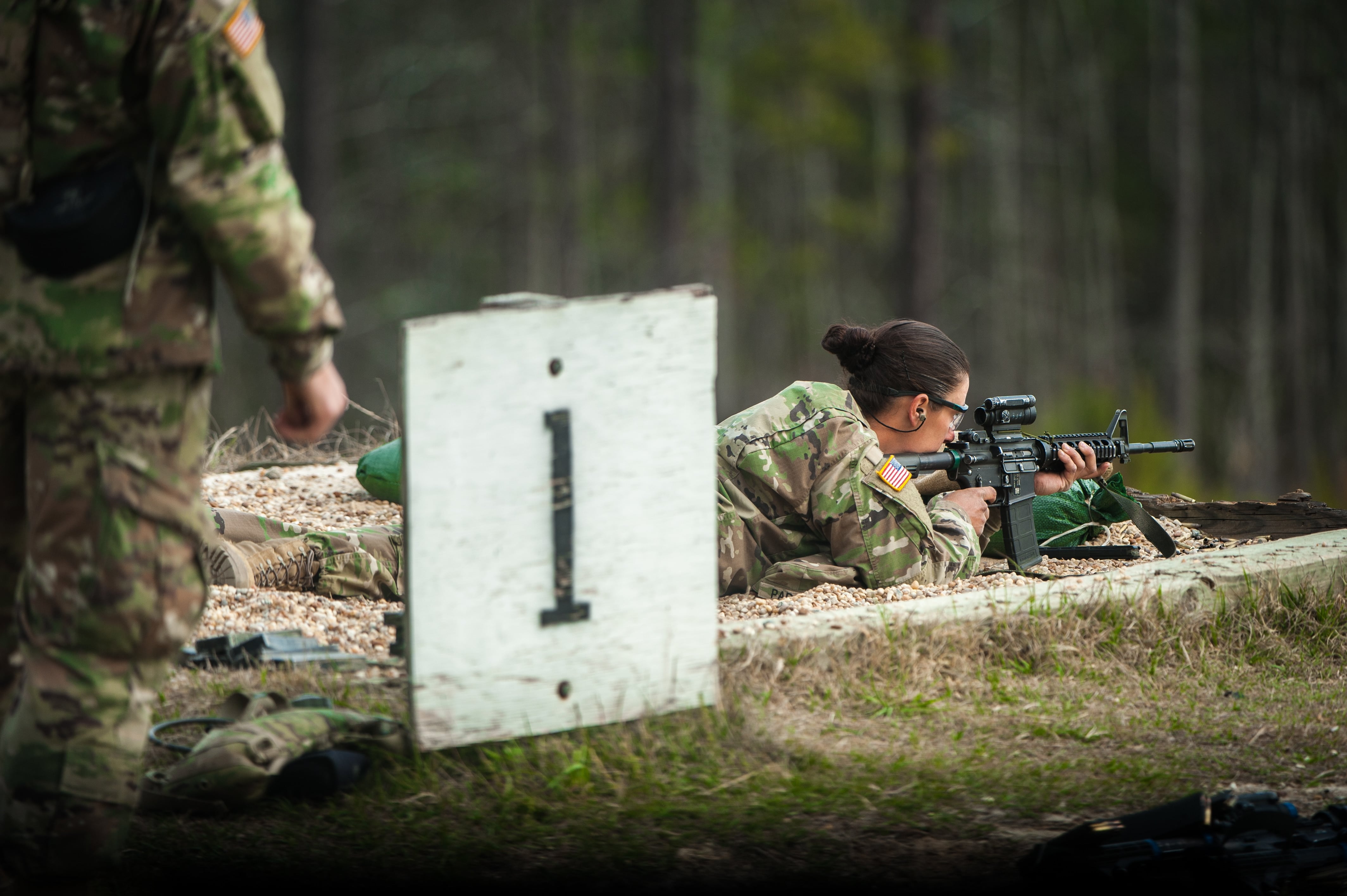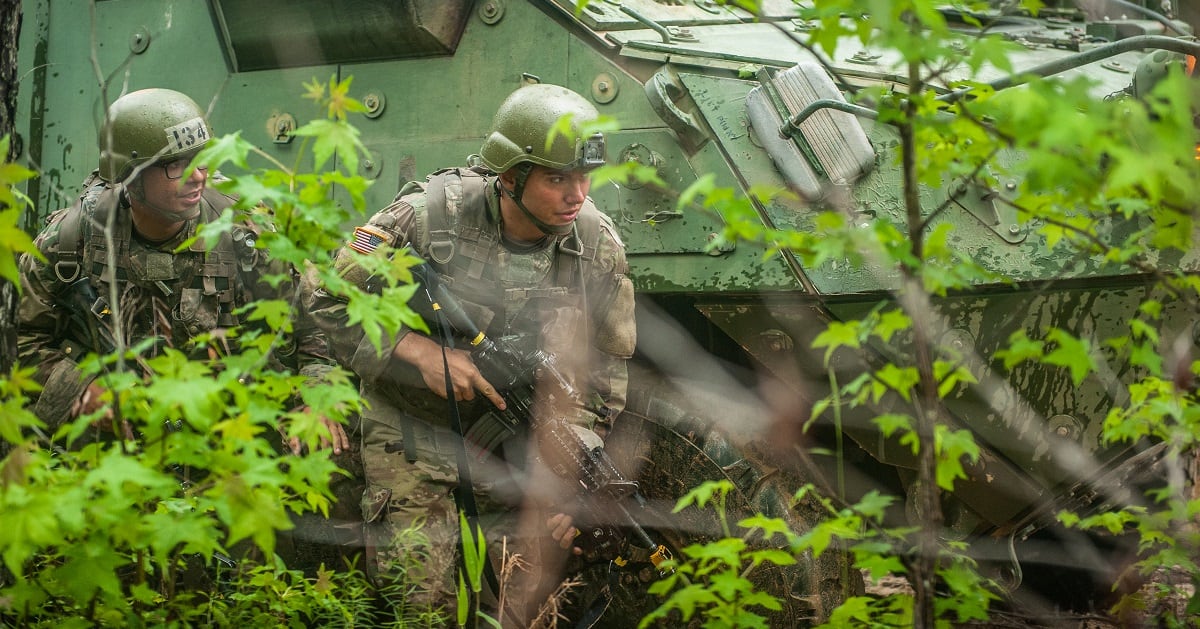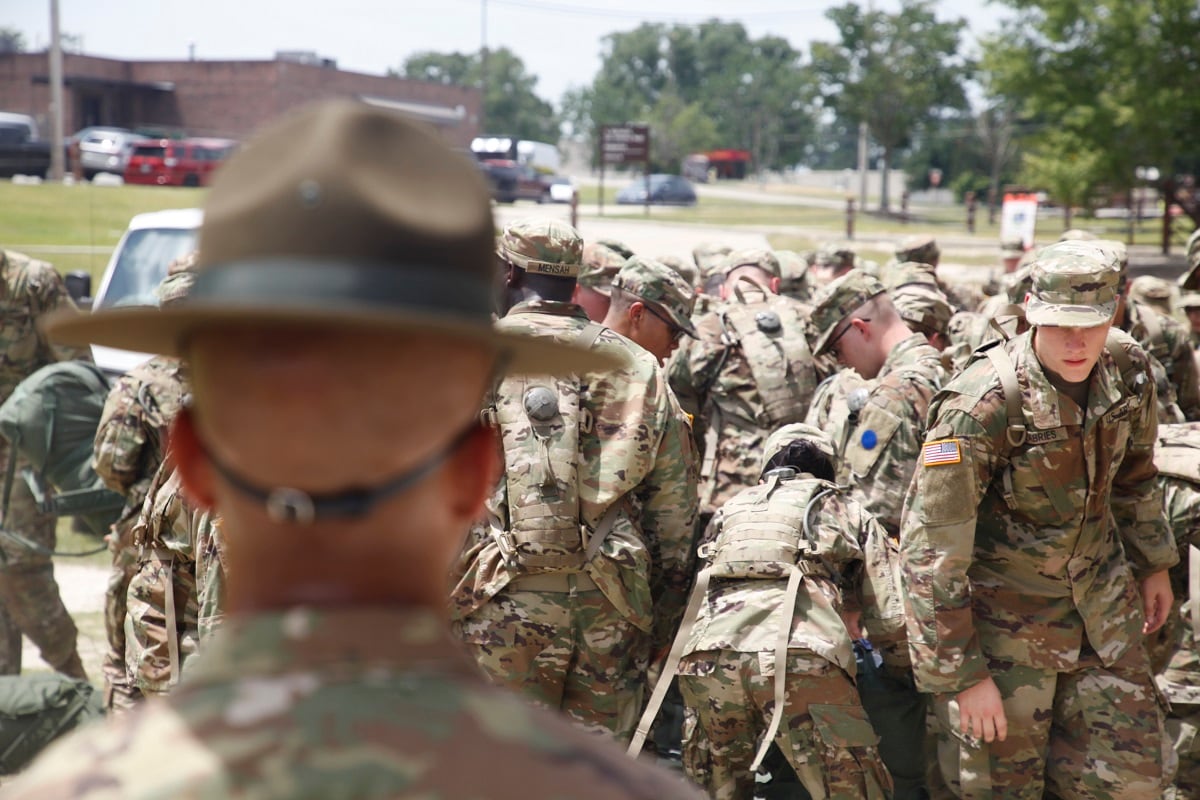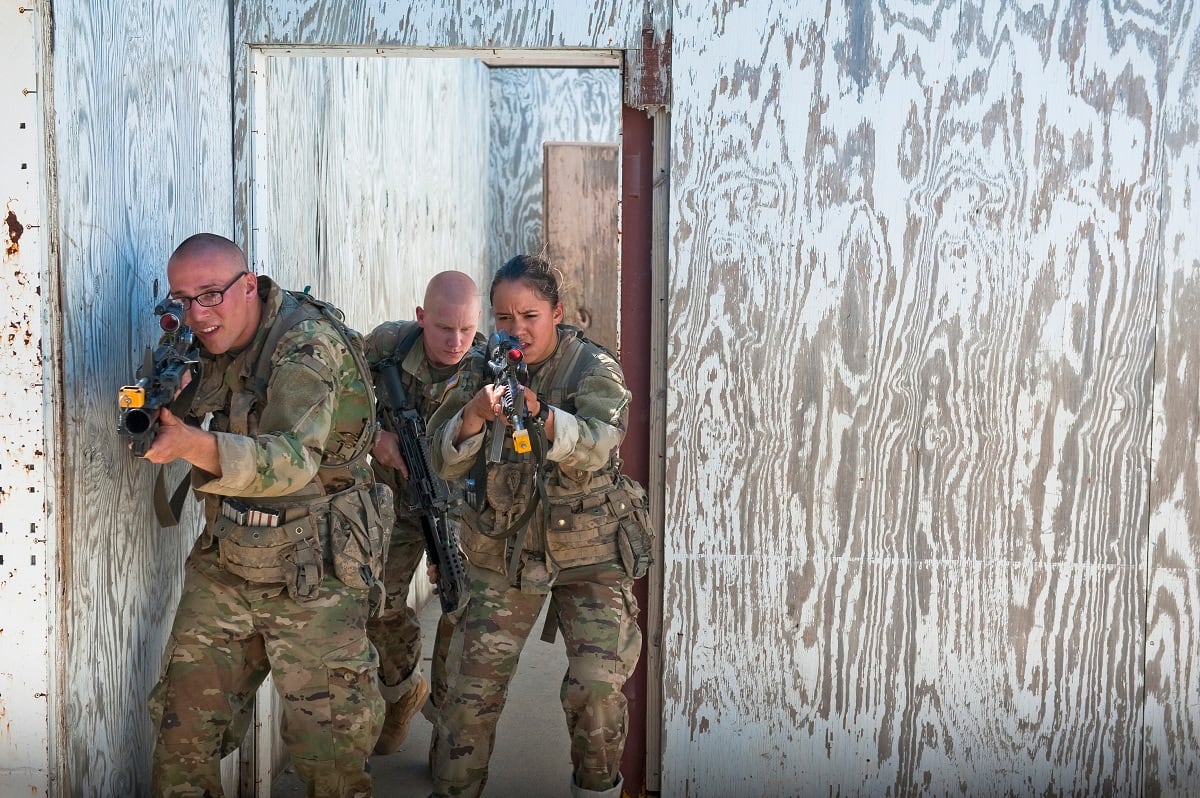The Army is on a quest to build better soldiers from top to bottom, and the next step might be to extend the amount of time spent making them.
The Army is moving forward with a pilot program to extend infantry one-station unit training by eight weeks, according to the service’s top enlisted soldier.
“We have packed a lot into basic training — we have — and we need to extend it,” Sergeant Major of the Army Dan Dailey told reporters on Monday. “We know we can make a better product.”
Leadership first publicly announced the idea back in March, when infantry school commandant Brig. Gen. Christopher Donahue spoke at the AUSA Global Force Symposium in Huntsville, Alabama.
“What we want, ultimately, is we want any soldier who graduates from OSUT, that they can immediately go and join any formation that they need to go to, no matter what phase of the sustained readiness model they’re in,” Donahue told Army Times of what was then an idea to extend to 21 weeks.
Current infantry OSUT, which combines the separate basic training and advanced individual training that most support MOSs go through, is 14 weeks long.
Under this pilot program, which launches in July, it would go up to 22 weeks through the rest of the year.

The program of instruction would be expanded to include more weapons training, first and foremost, Dailey said. Field training exercises would be extended, with more time spent on land navigation and combat lifesaving.
There will also be more physical training, drill and ceremony and combatives he said.
If that sounds familiar, it’s because it’s right out of the basic training overhaul at Fort Jackson, South Carolina, that went into effect earlier this year.
RELATED

A 2017 study of unit leaders found that soldiers were showing up to their first assignments out of shape and undisciplined, Maj. Gen. Malcolm Frost, who runs the Army’s training base, told reporters earlier this year.
The skills and habits of a good soldier have steadily grown in number over the years, and in order to make sure trainees are ready to deploy as soon as they graduate, Dailey said, it would make sense to give drill sergeants a few more weeks to make sure they have them down pat.
But the Army’s had quite a lot to do over the past couple of decades, with any extra time and money going to relentless deployments to Iraq and Afghanistan.
Post-2010, as the U.S. prepared to end combat missions in those countries, a drawdown was on the horizon, and the opportunity to re-set the training base presented itself.
RELATED

Training and Doctrine Command floated the idea of extending all basic training back in 2016, but an end strength surge the following year put that on hold.
Changing up the POI was an immediate fix, but the longer term goal has always been to add weeks to basic. The infantry, the Army’s largest MOS, will be the guinea pigs.
“Part of this study is to tell us, what is it going to cost?” Dailey said.
Leaders could sign off on an extension right now, he said, but there will be repercussions. Longer basic training requires more drill sergeants ― sergeants through sergeants first class who are already in high demand as squad leaders and recruiters.
It also decreases the number of new soldiers coming into the Army, at a time when the service is training to make it to 500,000 in the active duty component over the next several years.
There’s no urgency to extend basic, Dailey said, particularly without weighing out the costs and benefits. Still, he added, leaders know it would make a difference at the individual level.
“We’ve been looking at extending basic for a long time,” he said. “We know if we have more time with soldiers we can make them more physically capable.”
Meghann Myers is the Pentagon bureau chief at Military Times. She covers operations, policy, personnel, leadership and other issues affecting service members.





